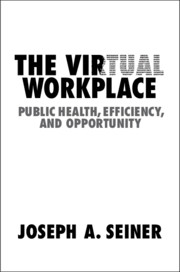Book contents
- The Virtual Workplace
- The Virtual Workplace
- Copyright page
- Dedication
- Contents
- Preface
- Acknowledgments
- 1 Introduction
- 2 Who Is an Employee?
- 3 Pleading Standards and the Technology Sector
- 4 Aggregating Claims
- 5 Collective Bargaining Agreements and Unions in the Modern Economy
- 6 Harassment and the Virtual Workplace
- 7 A Few Final Thoughts
- Appendix Selected Portions of Plaintiff’s Complaint in Bradshaw v. Uber Technologies
- Bibliography
- Index
2 - Who Is an Employee?
Published online by Cambridge University Press: 08 June 2021
- The Virtual Workplace
- The Virtual Workplace
- Copyright page
- Dedication
- Contents
- Preface
- Acknowledgments
- 1 Introduction
- 2 Who Is an Employee?
- 3 Pleading Standards and the Technology Sector
- 4 Aggregating Claims
- 5 Collective Bargaining Agreements and Unions in the Modern Economy
- 6 Harassment and the Virtual Workplace
- 7 A Few Final Thoughts
- Appendix Selected Portions of Plaintiff’s Complaint in Bradshaw v. Uber Technologies
- Bibliography
- Index
Summary
This chapter argues that the classification of workers as independent contractors or employees should be shaped by an overarching question: How much flexibility do individuals have in determining the time, place, price, manner, and frequency of their work? Those who have more control of these variables are more independent than those who must conform to a business owner’s schedule. This approach provides an objective basis for resolving classification disputes, particularly those that arise in the context of the technology-based economy. By minimizing legal uncertainty, a focus on worker flexibility would ensure both that workers receive appropriate protections under existing law and that companies are able to innovate without fear of unknown liabilities.
Keywords
- Type
- Chapter
- Information
- The Virtual WorkplacePublic Health, Efficiency, and Opportunity, pp. 6 - 28Publisher: Cambridge University PressPrint publication year: 2021

